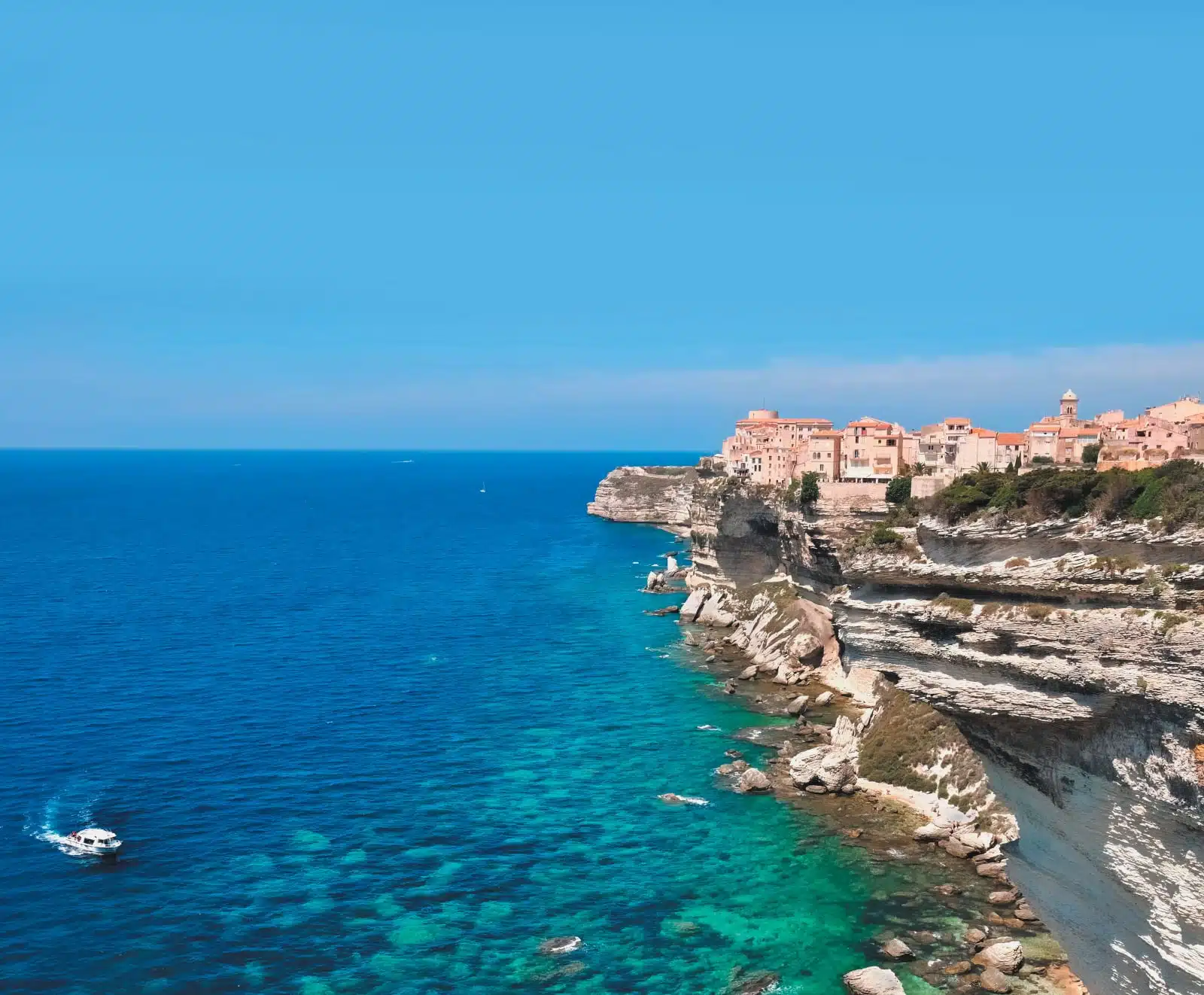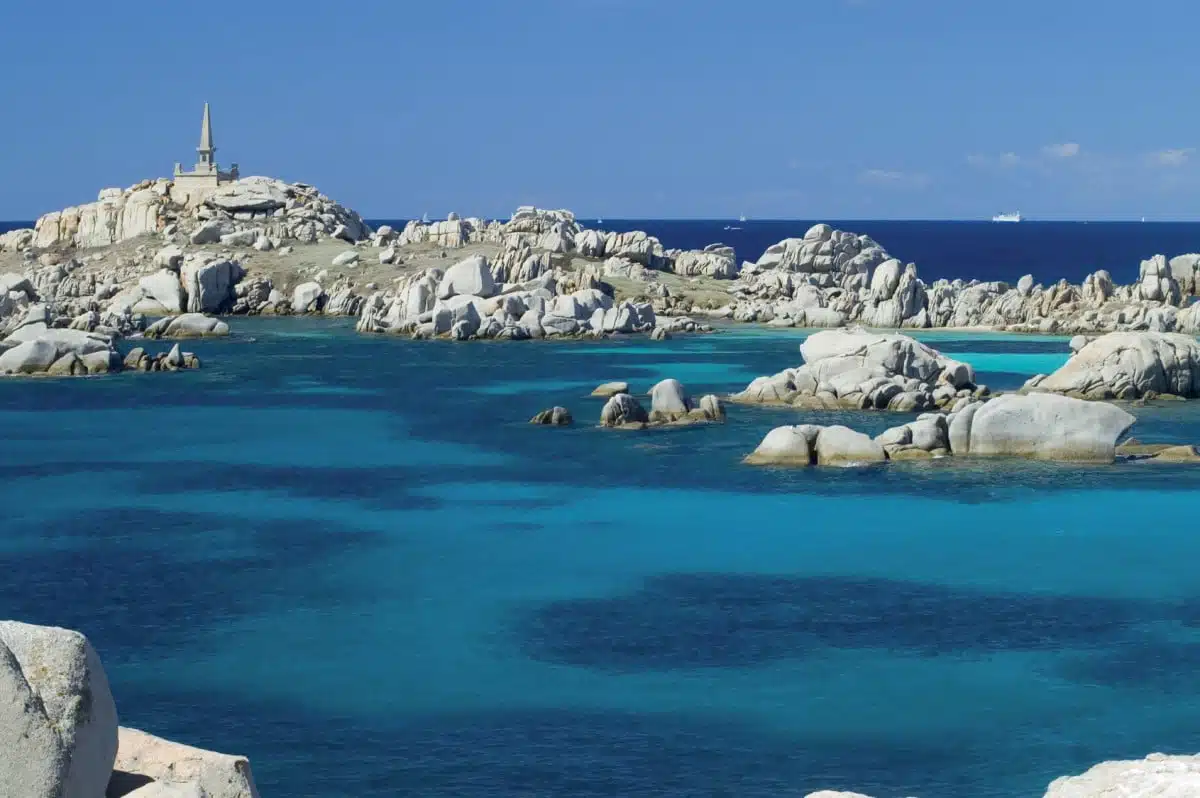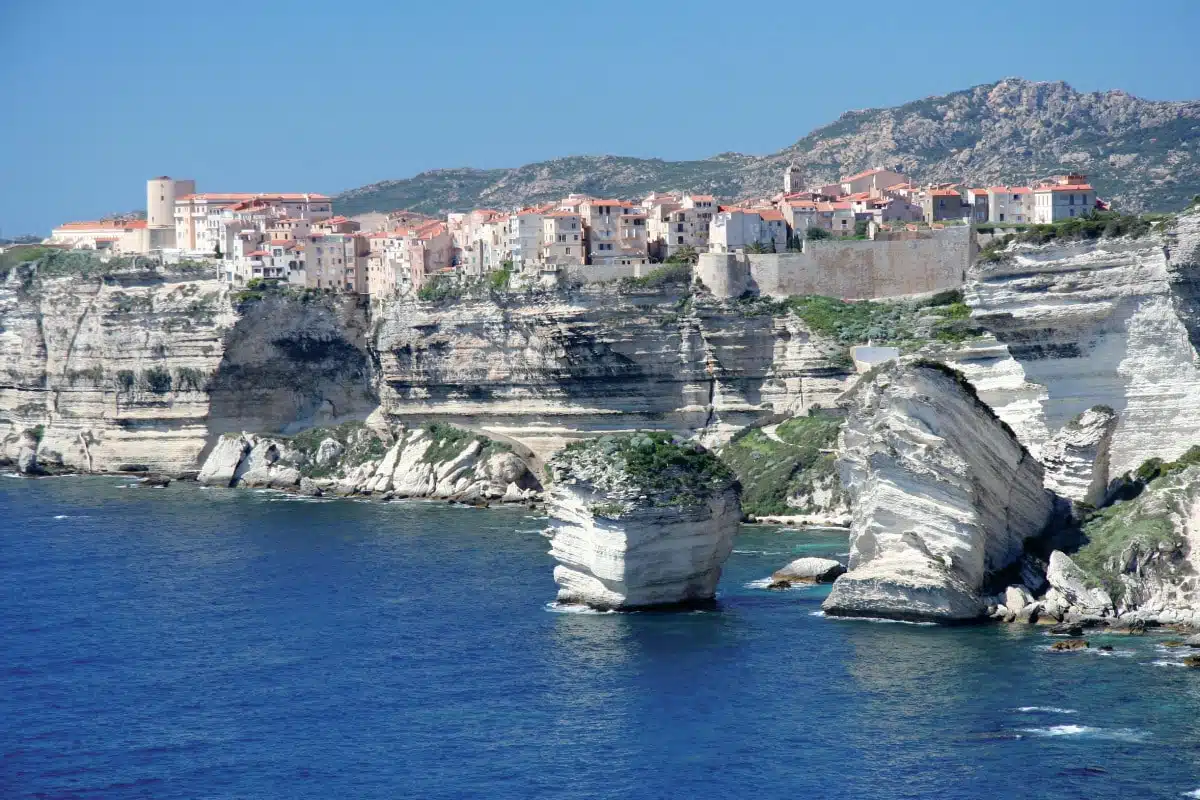Exploring its hidden treasures, from Corsica to Sardinia
This approximately 20 kilometre long strait offers the traveller the experience of sailing between France and Italy in a Mediterranean that contrasts perfectly with its usual image of that of a slumbering beauty. The Strait of Bonifacio, the first ever international marine park, is simply brimming with underwater treasures and beautiful islands, making it one of Europe’s most incredible nature reserves.
The Strait of Bonifacio nature reserve: a unique range of biodiversity
With its 80,000 hectares spreading out between Corsica and Sardinia, the Strait of Bonifacio is mainland France’s largest nature reserve to date. From limestone cliffs to granitic chaos, there are no less than 120 kilometres of coastline – accessible from both the land and the sea – for fans of this part of the world to enjoy. The Bonifacio region has at least 25 fabulous beaches to offer as well as secret coves and a number of exceptional lagoons, such as Roninara, Balistra, Marora, Piantarella, Petit Sperone, Paragan, Tonnara – a splendour made all the more fascinating by the fact that it is home to 40% of all the Mediterranean’s remarkable species. The richness of its underwater fauna and its exceptional variety of rare birds earned it the designation of “international marine park” in 2010, the result of a combined initiative of the French and Italian ministries of ecology.

Bonifacio: more a stronghold than a citadel
Bonifacio was one of the first strongholds in history, i,e. a kind of fortified outpost run, operated and defended by the people who live and work there. The citadel associated with the town is simply the military part of a stronghold dedicated to defending the strait during the Genoese era. Corsica was part of the Republic of Genoa from the 14th century to the 18th century, before finally being conceded to France in 1768, the intervention of which made it possible to calm the numerous revolts taking place against the Genoese authorities. A simple glance at its plateau from the sea makes it easy to understand the extent to which the city embodied the power of the Republic of Genoa, with the dozens of dwellings clustered around the cliff appearing to have been carved from the very rock itself. Powerful and impenetrable, the sight of Bonifacio seen from the sea calls to mind its bellicose past.

Pertusato: the caves of the south
Cape Pertusato and its lighthouse, to the south of Bonifacio, serve as a guide for sailors. The area of the sea along the cliffs is protected, with all forms of fishing prohibited. Only swimming and bathing in its shallow and therefore crystal-clear waters are permitted, offering a simply amazing underwater experience. Amazement is only the first act of the show however. The caves along the cape are the second – a succession of limestone cavities, including one open to the sky, sculpted by the sea and which it’s possible to enter to admire the gorgeous turquoise reflections inside.
The sea, master in these parts
Though the Mediterranean is of course not an ocean, it exerts just as much power and authority as one. And the sailors that criss-cross the Strait of Bonifacio are aware of this: the strait has always had a capricious reputation, and it’s one that seasoned sailors know and respect. Its legend was definitively established in the region in February 1855, when the Sémillante, a famous three-master belonging to the French navy, was shipwrecked and sank here. The incident now forms part of the region’s historical heritage, with tribute still paid each year to the sailors who were lost.
The Lavezzi archipelago and its seabeds
Ten kilometres from the limestone rocks of Bonifacio lies the most southerly point in mainland France: the Lavezzi archipelago, which is only accessible from the sea. Visually typical of this region of the Mediterranean, the Lavezzi islands are synonymous with turquoise coves, white sandy beaches and granite blocks polished by the wind – a picture-postcard paradise offering exceptional seabeds. And as proof of the effectiveness of the protective measures in operation in this area and the strict control exerted over mooring and anchoring, underwater meadows of Posidonia are again flourishing, thus providing food and shelter for wildlife and oxygenating the waters anew.

Maddalena: a timeless Sardinian archipelago
Twinned with the town of Ajaccio, the settlement of La Maddalena stands dominating the archipelago of the same name. And if there is anywhere where peace and tranquillity have definitively set up residence, it’s at this Italian national park (a status conferred in 1994) made up of seven main islands (La Maddalena itself, Caprera, Spargi, Santo Stefano, Budelli, Santa Maria and Razzoli) together with a few minor islets. Unlike La Maddalena, the rest of the islands are now uninhabited, free from all traces of human presence, and rich in endemic species. Lying to the northwest of Sardinia, the archipelago is an absolutely essential place to visit when sailing the Strait of Bonifacio. Pink granite, sparkling coves, unspoiled beaches and fascinating rocky shapes and silhouettes typify these islands, which are amongst the best preserved in the entire Mediterranean Basin.

Southeast of the archipelago’s main island, La Maddalena, lies Caprera. This small piece of richly luxuriant protected land abounds with secret coves and tiny beaches, most of which are accessible only from the sea. The contrast of the colours conveys a sense of an island with incredible vegetation. And if Caprera is seen as the little sister of La Maddalena, this is perhaps due to the bridge – a simple seawall as long as it’s wide, linking the two together like a cord.
The final marvel of the Sardinia archipelago: the pink sand of the unspoiled and protected island of Budelli. Despite its mere 1.6 square kilometres, this little island of the La Maddalena archipelago has the reputation of being one of the most beautiful in the entire Mediterranean. There is only one sole inhabitant (its caretaker) to testify to this however. Due to its status as a strictly protected site, sailors are required to keep a reasonable distance from its shores. This nevertheless does not prevent them from gazing upon and contemplating spiaggio rosa, the pink beach on the island’s southeast side, a beach which, as its name suggests, consists of pink sand, with the colour due to the presence of granite particles. Filmmaker Michelangelo Antonioni had the privilege of setting foot on this very beach in 1962, when he filmed a few wonderfully sublime scenes for his film Red Desert here.
The Strait of Bonifacio nature reserve in figures:
- A vast 80,000 hectare reserve encompassing both land and sea
- Mainland France’s number one nature reserve in terms of
- overall area
- 70 kilometres of coastline, 120 when you add in the islands of the Lavezzi archipelago
- The idea of creating a nature reserve was first proposed In 1966 by the “Bourlière mission”, one of the first oceanographic projects to be undertaken in the region
- Officially designated a nature reserve on the 23 September 1999
- The seabeds never reach more than 100 metres in depth

PONANT takes you there
Embark for the heart of the Mediterranean and discover the unexpected treasures this strait has to offer



